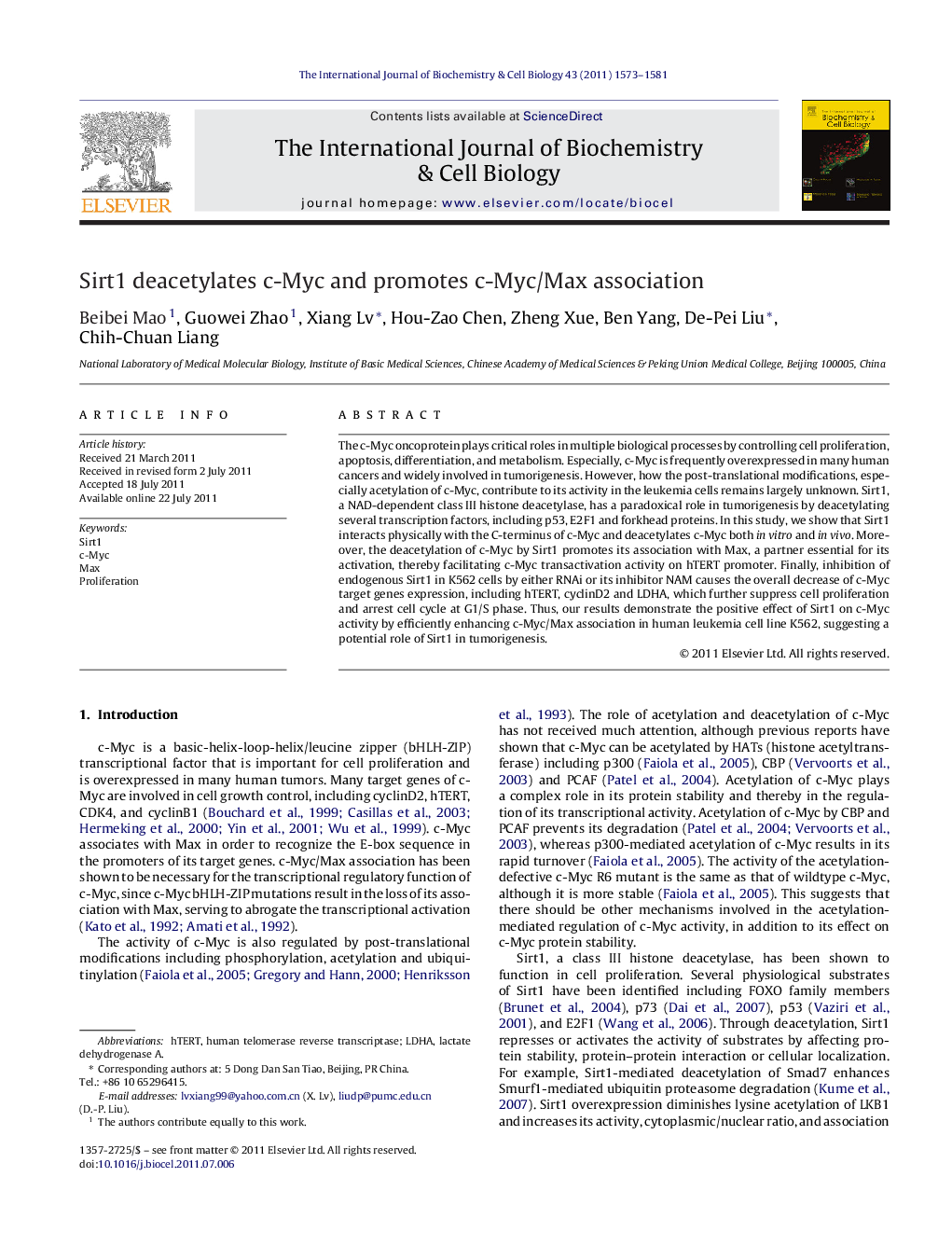| Article ID | Journal | Published Year | Pages | File Type |
|---|---|---|---|---|
| 1983951 | The International Journal of Biochemistry & Cell Biology | 2011 | 9 Pages |
The c-Myc oncoprotein plays critical roles in multiple biological processes by controlling cell proliferation, apoptosis, differentiation, and metabolism. Especially, c-Myc is frequently overexpressed in many human cancers and widely involved in tumorigenesis. However, how the post-translational modifications, especially acetylation of c-Myc, contribute to its activity in the leukemia cells remains largely unknown. Sirt1, a NAD-dependent class III histone deacetylase, has a paradoxical role in tumorigenesis by deacetylating several transcription factors, including p53, E2F1 and forkhead proteins. In this study, we show that Sirt1 interacts physically with the C-terminus of c-Myc and deacetylates c-Myc both in vitro and in vivo. Moreover, the deacetylation of c-Myc by Sirt1 promotes its association with Max, a partner essential for its activation, thereby facilitating c-Myc transactivation activity on hTERT promoter. Finally, inhibition of endogenous Sirt1 in K562 cells by either RNAi or its inhibitor NAM causes the overall decrease of c-Myc target genes expression, including hTERT, cyclinD2 and LDHA, which further suppress cell proliferation and arrest cell cycle at G1/S phase. Thus, our results demonstrate the positive effect of Sirt1 on c-Myc activity by efficiently enhancing c-Myc/Max association in human leukemia cell line K562, suggesting a potential role of Sirt1 in tumorigenesis.
